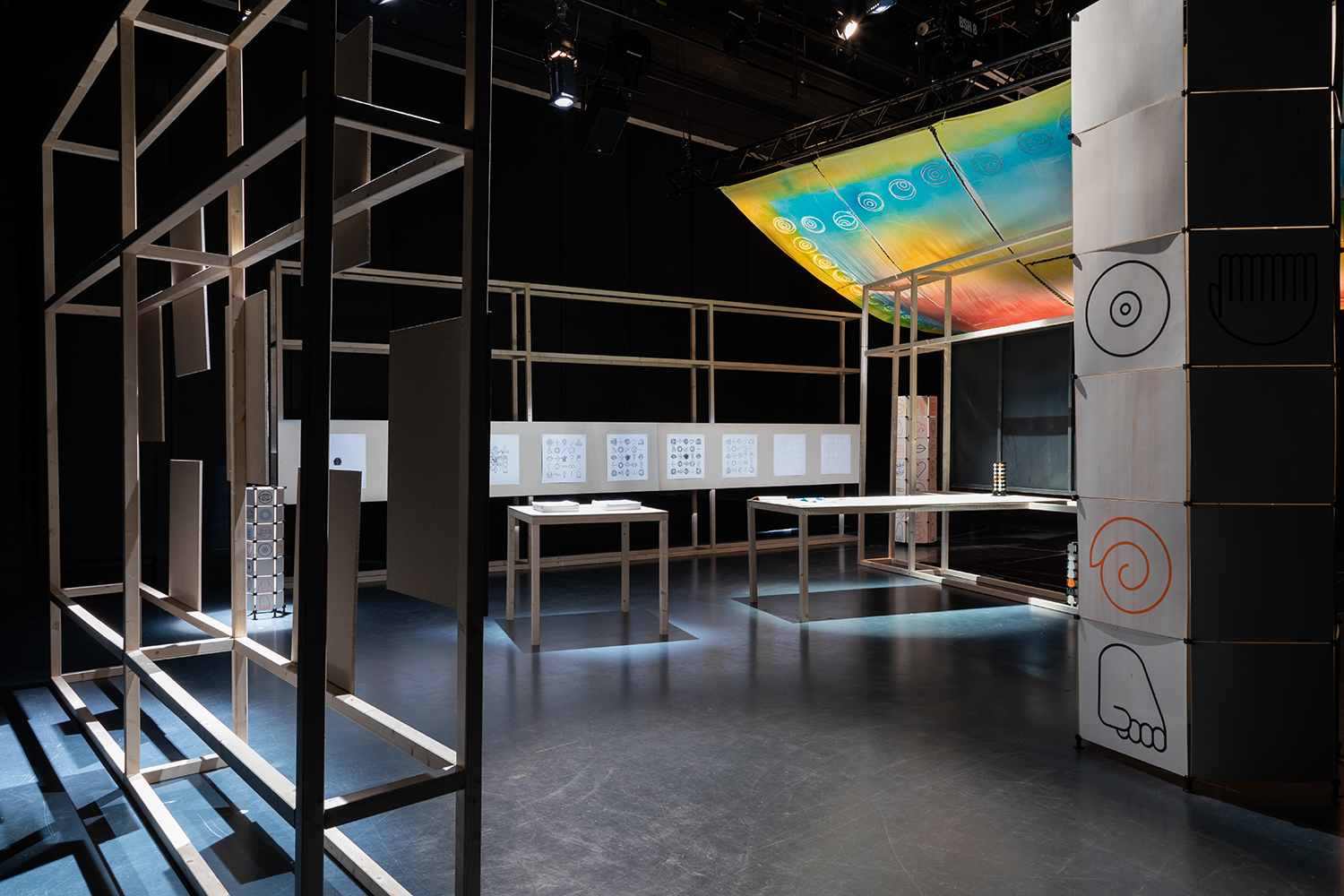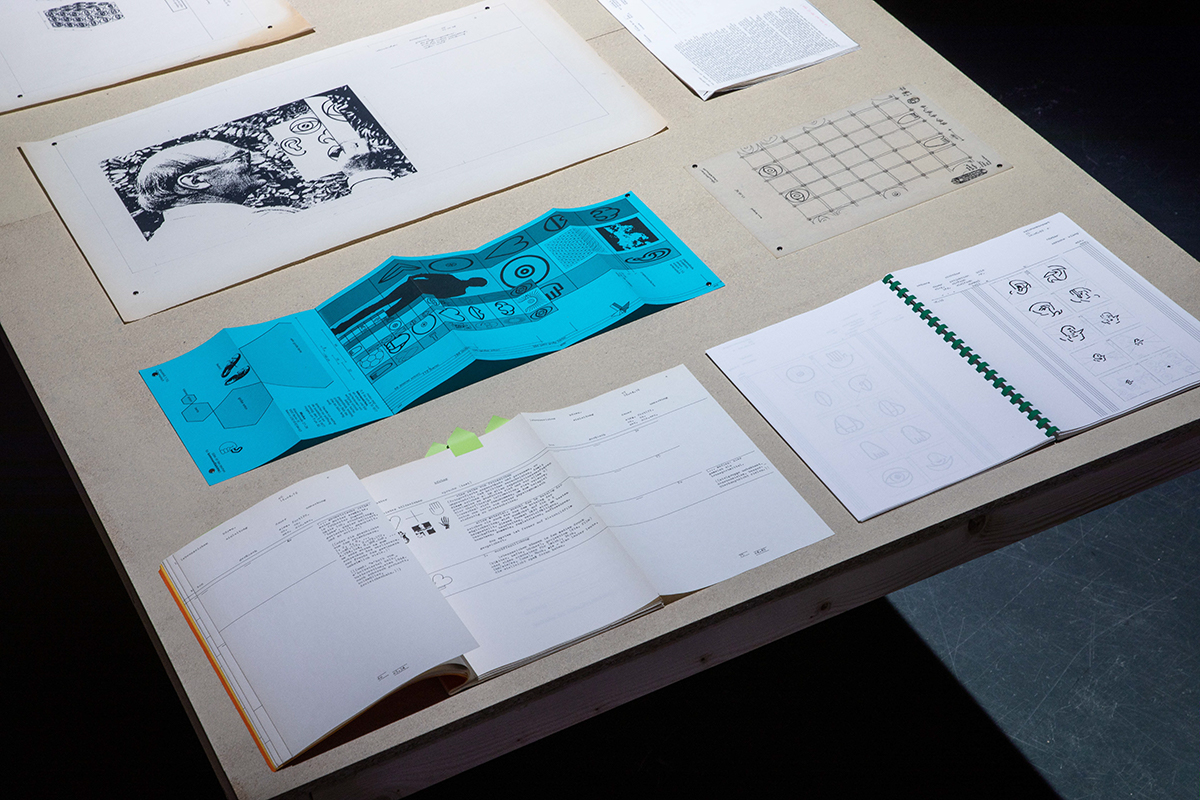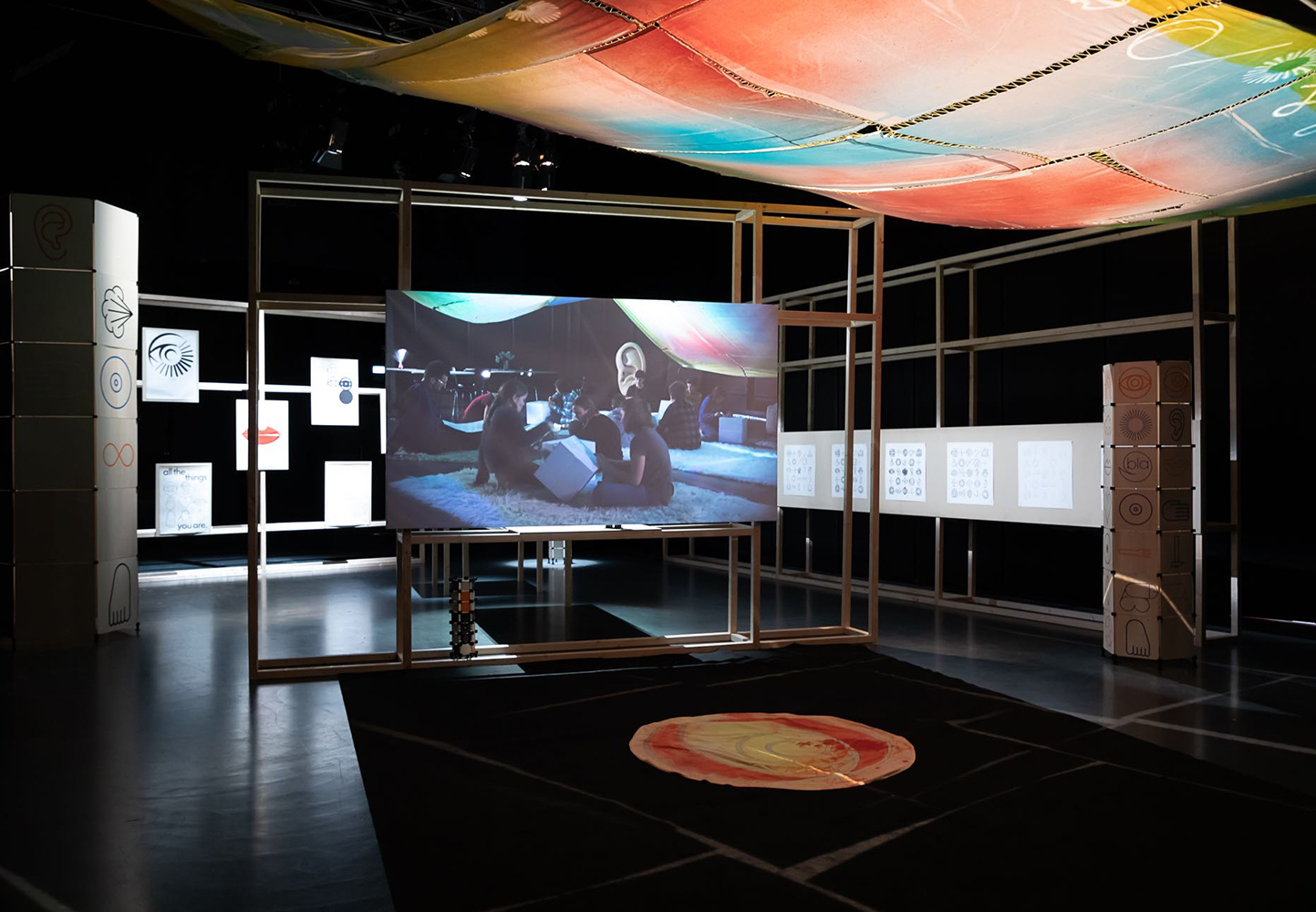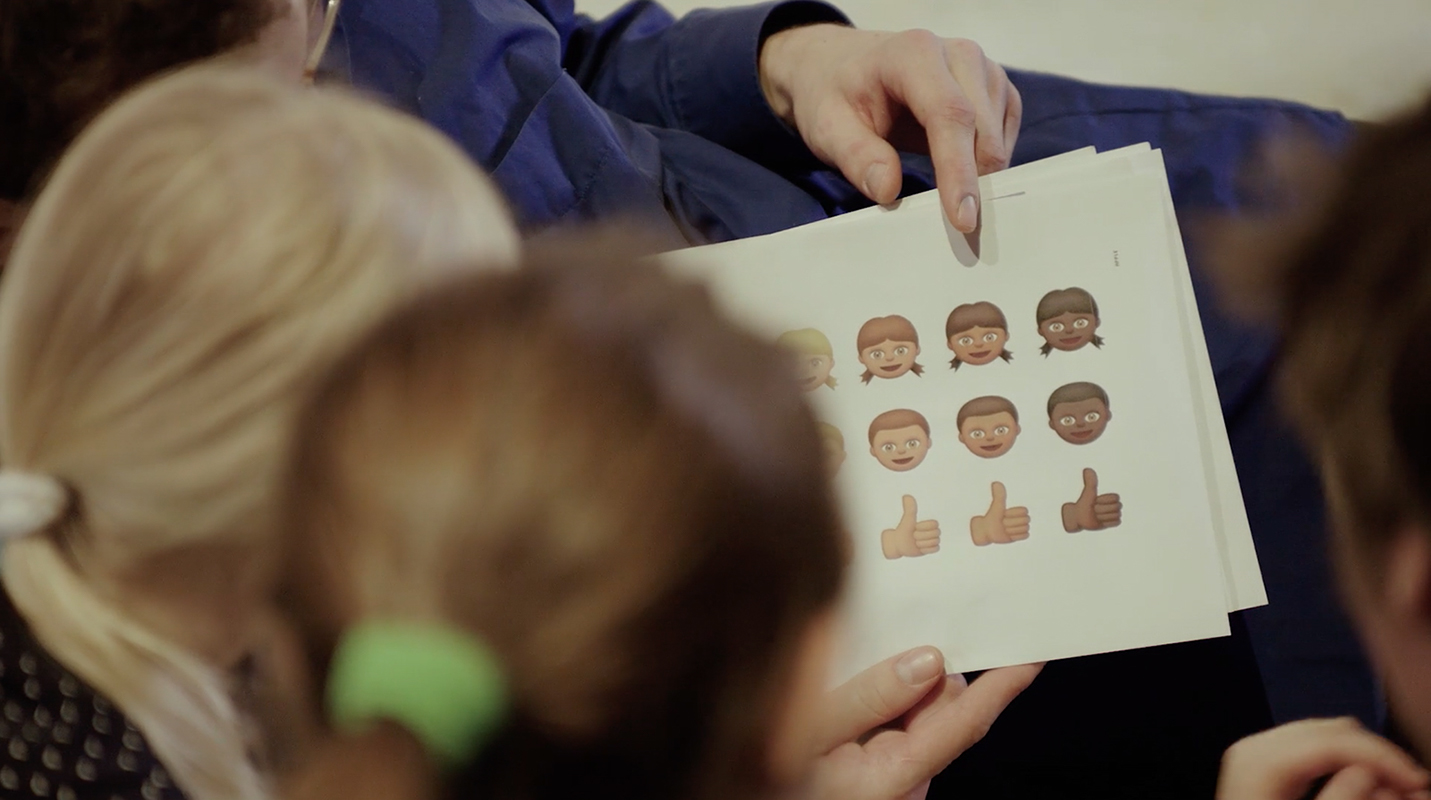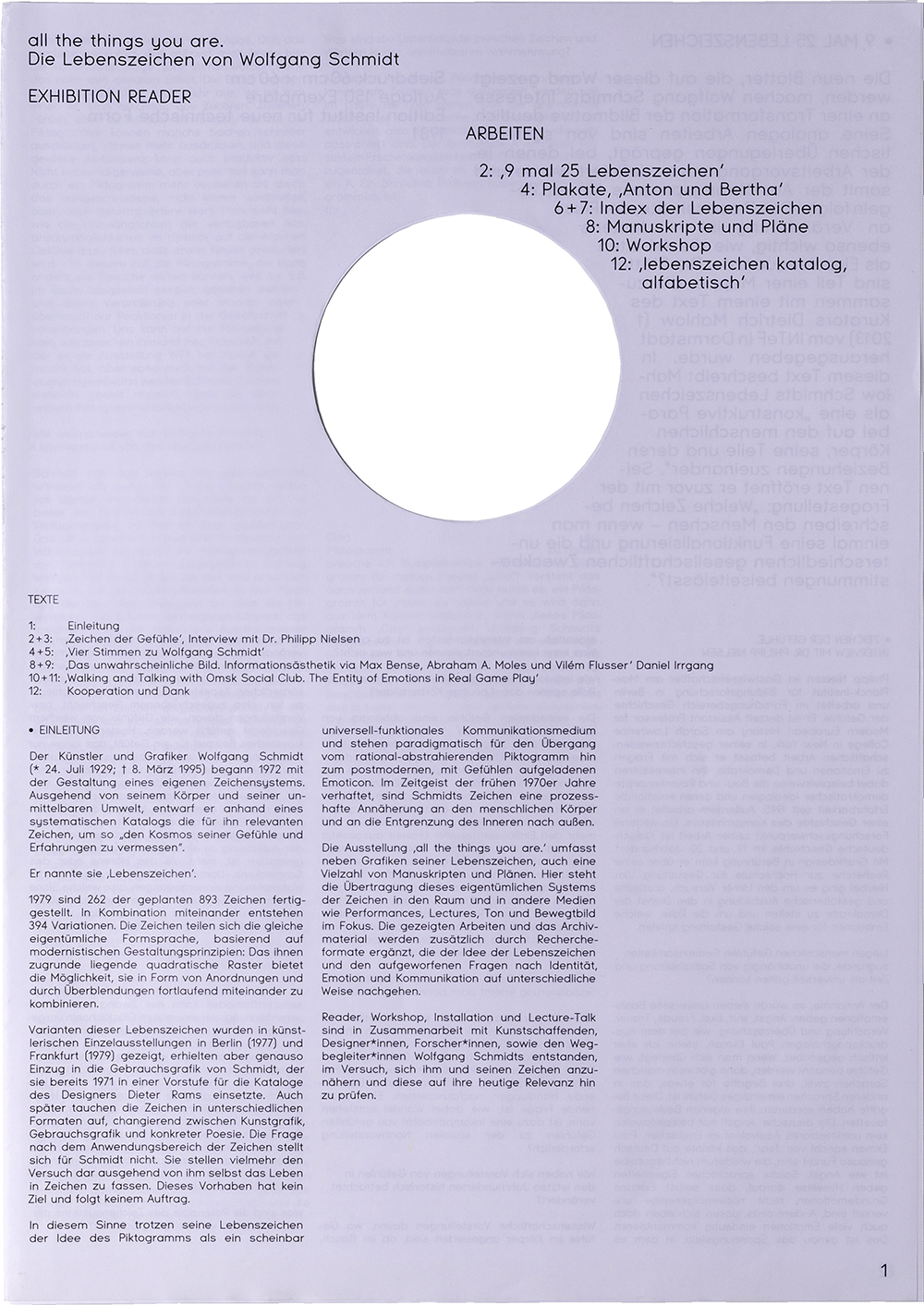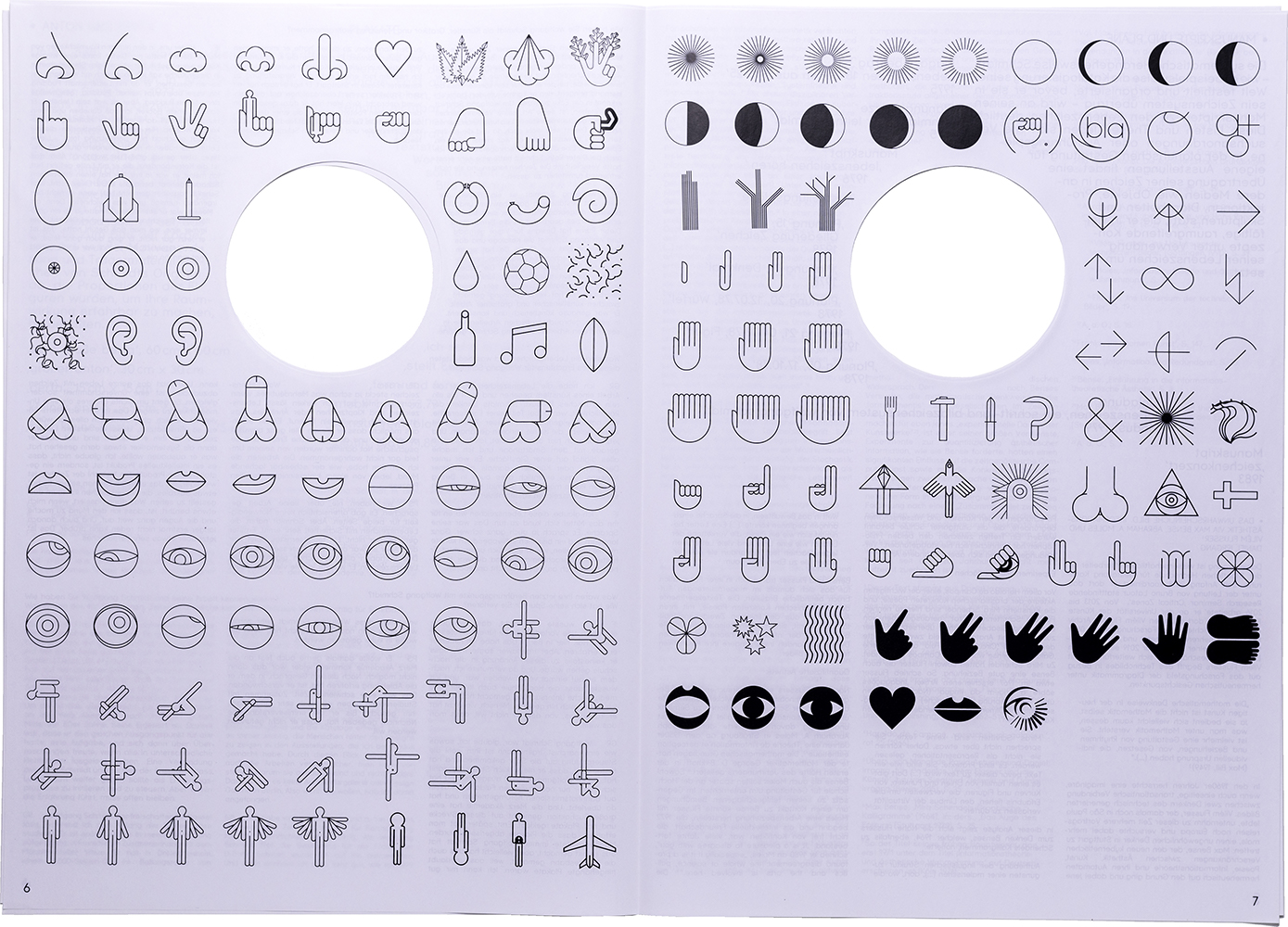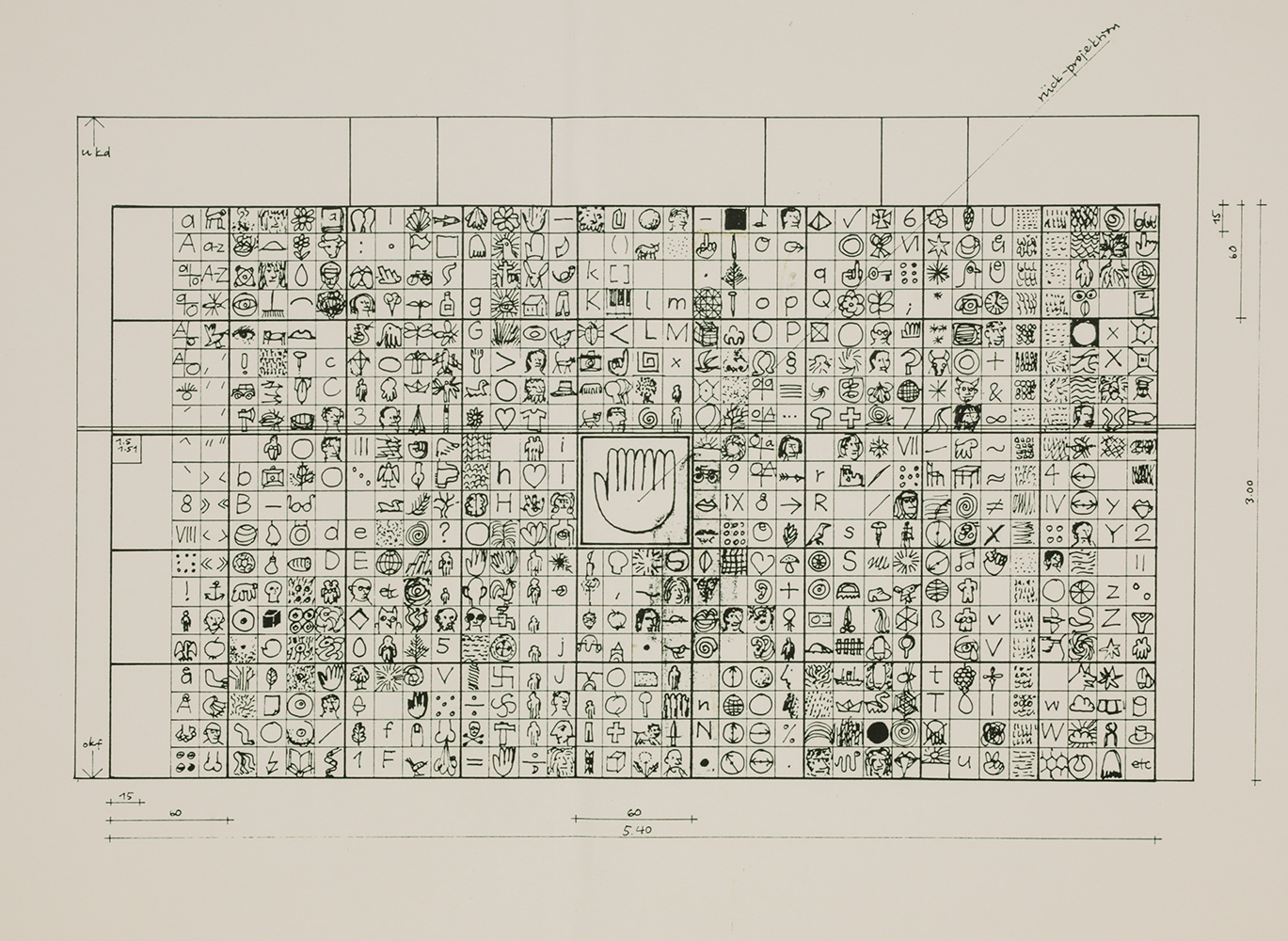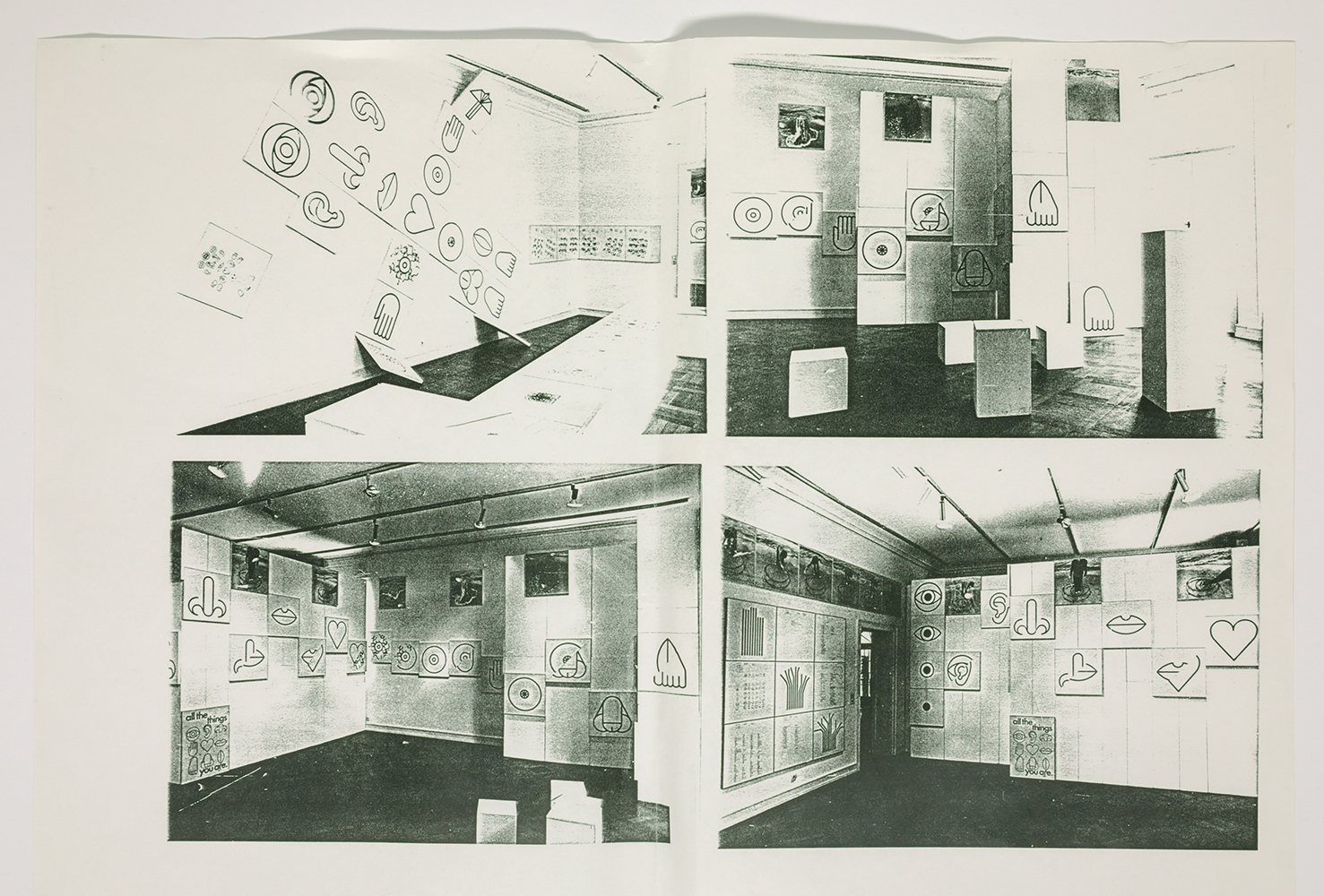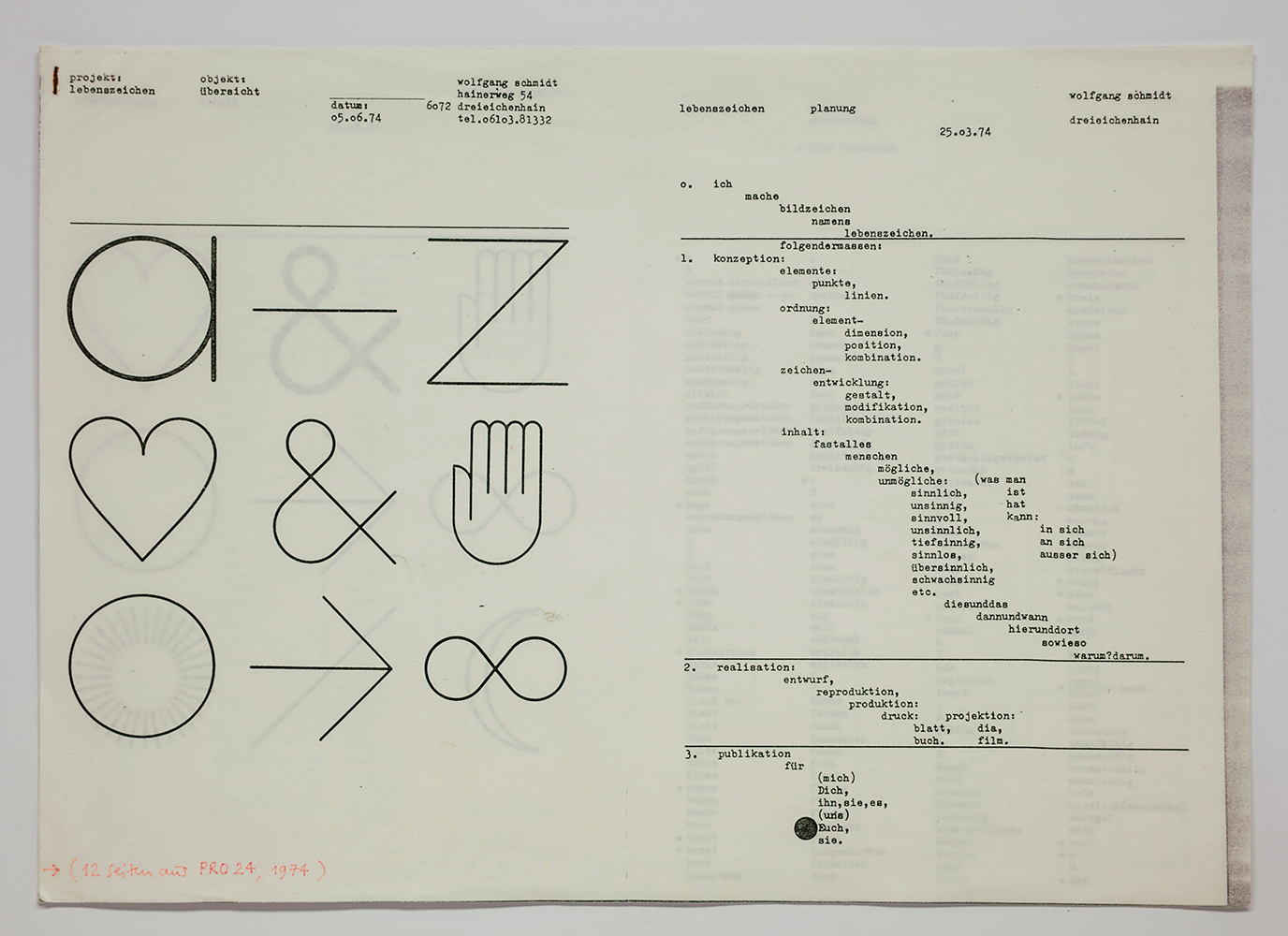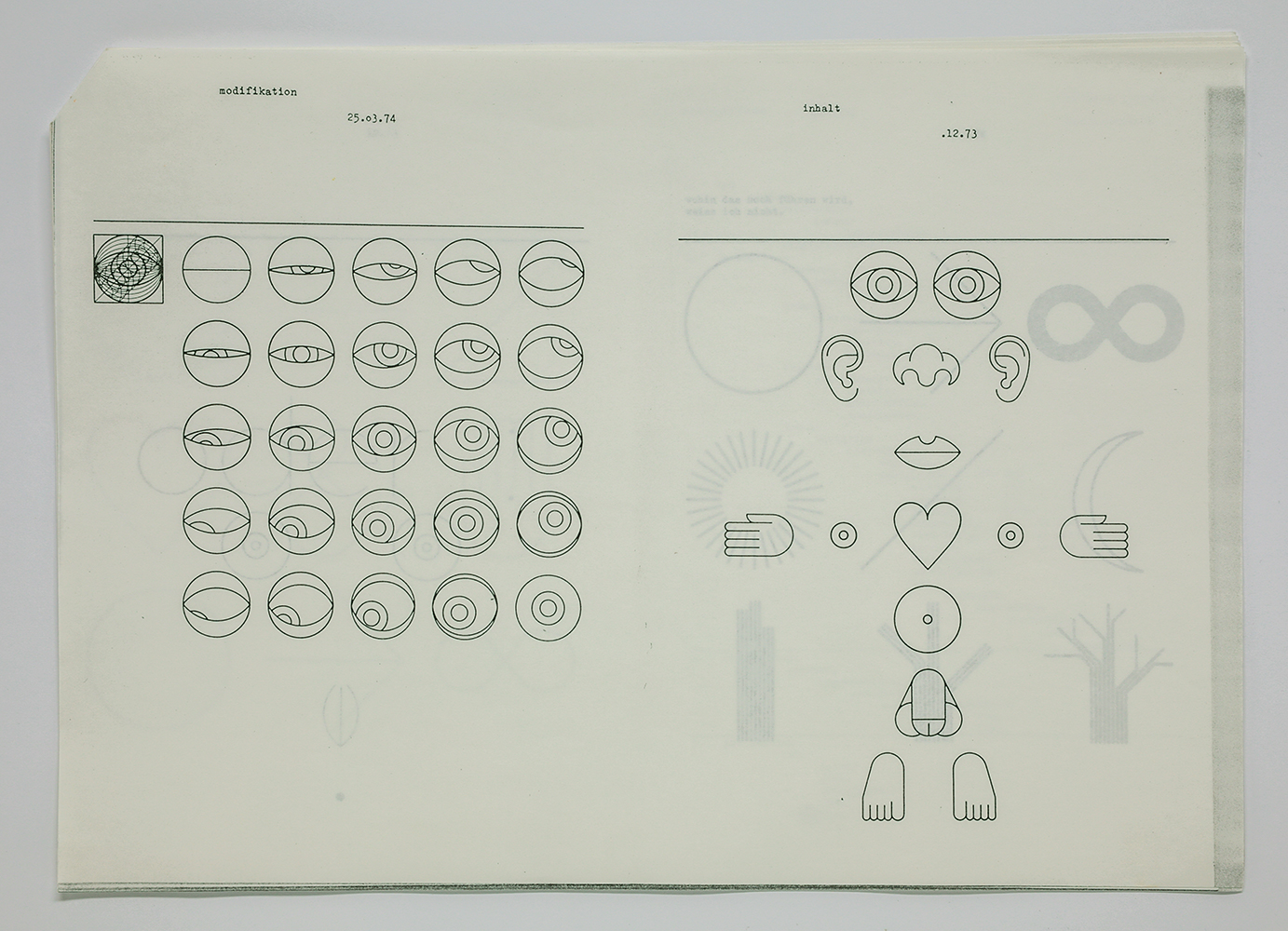The Signs of Life were shown in exhibitions in Berlin (1977) and Frankfurt (1979), but they were also utilized in the commercial graphics of Wolfgang Schmidt, who used them as early as 1971 in a preliminary stage for the catalogs of designer Dieter Rams. The symbols also appear later in different formats, alternating between art graphics, commercial graphics, and concrete poetry. For Schmidt, the question of the scope of the signs does not arise. Rather, they show an attempt, starting from Schmidt himself, to capture one's own life in signs.
In this sense, his Signs of Life defy the idea of the pictogram as a seemingly universal-functional communication medium and paradigmatically represent the transition from the rational-abstract pictogram to the post-modern, emotionally charged emoticon. Rooted in the zeitgeist of the early 1970s, Schmidt's signs are a process-like approach to the human body as the barrier between the inner self and the outside world.
